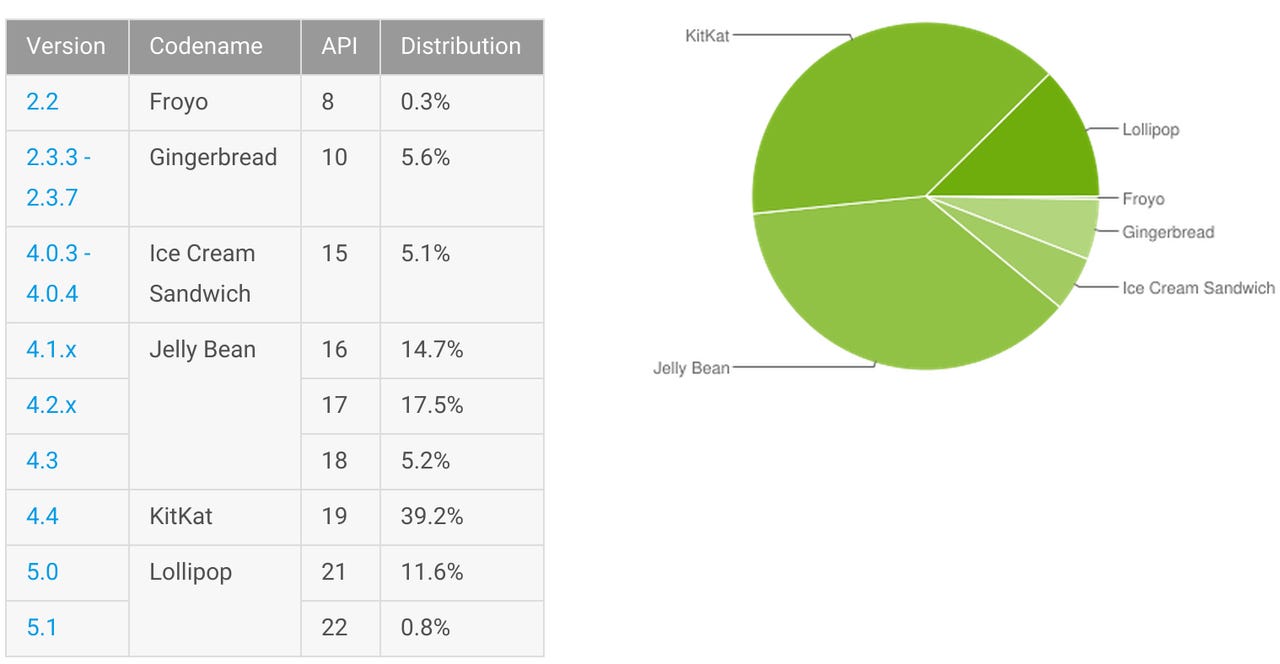Before Android M arrives, Lollipop installs have a way to go

We're now officially in what I call the "silly season" for Android. We have a new version of the software and the most current edition still isn't available for many devices.
To be more accurate, we actually only have a developer preview of the newest version of Android as of last week.
Google didn't provide the name of Android M -- I'm going with Macaroon in the office pool -- and it hasn't released the software to device makers. I'll be taking a closer look at the preview after installing it on one of my own supported phones but the early word is that Google still has work to do before the official release.
In the meantime then, most of us are using currently available versions of Android, the latest being Lollipop, which launched in October. And a relative few devices actually have it.
Google released its monthly data on Monday showing that over the past two weeks, only 12.4 percent of the devices visiting the Google Play Store were running Lollipop. That's up from 9.7 percent in early May but it's not much growth.

Android Jelly Bean and KitKat software still account for the bulk of phones and tablets running Google's software at this point.
Google I/O
That should change soon though: Various handset makers are at the very least publicly testing Android 5.0 Lollipop software on more recent devices. And of course, many brand new phones are shipping with Lollipop: The Asus ZenFone2 I bought last week came with the Android 5.0 so it's mostly up to date.
Of course, Google Play Services adds many features and services on devices running older versions of Android; it's one way the company has addressed the software fragmentation issues of Android's past, even if it's not a perfect solution.
Expect Apple to make note of the Android Lollipop upgrade figures next week at its WorldWide Developer Conference while ignoring the Google Play Services impact.
Even so, what will the Android version landscape look like when Google actually does release Android M, at least to device makers? I'd expect that to be around October but that's just an educated guess. If that date is right, or at least close, devices launching in January would be the likely candidates to have Android M pre-installed.
The exception of course would be Google's own Nexus phones and tablets. They typically get the newest software versions and updates first. And for that reason, many of my phone purchases over the past five years have been Nexus-branded.
My Moto X purchases in 2013 and 2014 were exceptions because Motorola didn't make many software modifications; that decision paid off as Motorola updates their devices quicker than most other Google hardware partners.